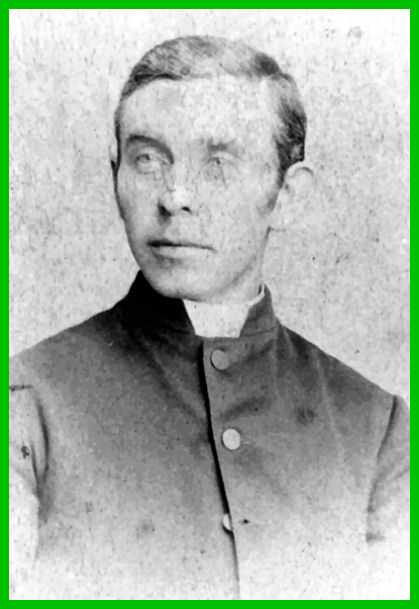

Thomas was born in Milltown, County Galway on 11th June 1853; the son of Denis and Catherine (née Kenny) Flannery. He was parish priest of Carna, County Galway in the heart of the Connemara Gaeltacht.
Public works projects were critical to the survival of small rural communities in the nineteenth century, both as a means of employment to supplement meagre farm income, and also as a method of ensuring that struggling villages maintained a viable level of infrastructure. The clergy of the day took a leading role in developing public works by representing the local community at all levels of government.
Fr. Tom was the backbone of the movement for the promotion of industrial prosperity in his parish. He successfully gave testimony to the Land Acts Royal Commission, where he advocated against emigration, in favour of local migration to reclaimed land purchased and resold by the Government. He also highlighted unfair rents and brought the underdevelopment of the region to the attention of the government.
His eloquent representations to the Government resulted in the construction of the road from Galway to Carna - opened by the Viceroy, Lord Zetland - and he played host to the Countess of Fingall who visited for the occasion and who described him in her memoirs : "Father Tom was full of schemes. He was the typical Irish priest of his day - a benevolent tyrant, inspired with zeal for his people, the director, temporal and spiritual, of his flock."
It was at this time that he established a useful relationship with Arthur Balfour (later Lord Balfour), the Chief Secretary (later Prime Minister), who was lobbied for numerous other projects including the railway between Galway and Clifden.
In 1887, Fr. Tom gave evidence before the Select Committee of the House of Commons, and persuaded them to embark on forestry planting on a 1,000 acre tract of land in Knockboy in his parish. The project successfully provided employment for a number of years until replanting was discontinued in 1899, and part of the forest was damaged by fire in 1912. A significant development arising from the project was the introduction of Western American conifers - particularly Douglas Fir and Sitka Spruce - which are the mainstay of the modern forestry industry.
Fr. Tom was instrumental in the construction of a number of piers which provided construction employment as well as facilities for local fisherman, and he is credited with the construction of two schools and two bridges. The schools were built at Loughaconeera (Loch Conaortha) and Mweenish Island (Maínis); the bridges were constructed at Kylesalia (Coill Saile) over the Kilkieran Estuary, and at Mweenish Island linking the island with the mainland at Carna. The former bridge was named Flannery Bridge in his honour.
Fr. Tom died of Typhus on 28th December 1891 (aged just 38) and is buried in the church grounds in Carna. A prominent memorial in the style of a high cross was erected by members of his family, and this headstone has since been re-laid flat over his grave.
[his portrait is illustrated above; courtesy of his grand-nephew, Fr. Michael Flannery PP]